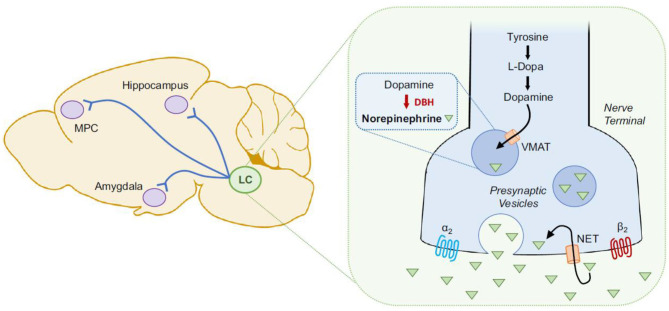Figure 10.
Graphic illustration of norepinephrine (NE) synthesis in the brain of a rodent. Synthesis of NE occurs from tyrosine through the following steps: (a) tyrosine hydroxylase converts tyrosine to levodopa or l-3,4-dihydroxyphenylalanine (L-DOPA); (b) L-type amino acid decarboxylase converts L-DOPA to dopamine; (c) vesicular monoamine transporter (VMAT) transports dopamine into the presynaptic vesicles; and (d) dopamine-β-hydroxylase (DBH) converts dopamine into NE. NE binding to β- and α- adrenergic receptors takes place after its release from the presynaptic vesicles into the synapse, from where norepinephrine transporter (NET) mediates its reuptake. Locus coeruleus (LC) houses the majority of brainstem noradrenergic neurons and it projects to several regions in the brain, including the amygdala, hippocampus and medial prefrontal cortex (MPC) [Reprinted from (363); Copyright (2020); with permission from Elsevier; License # 4986231317003].

